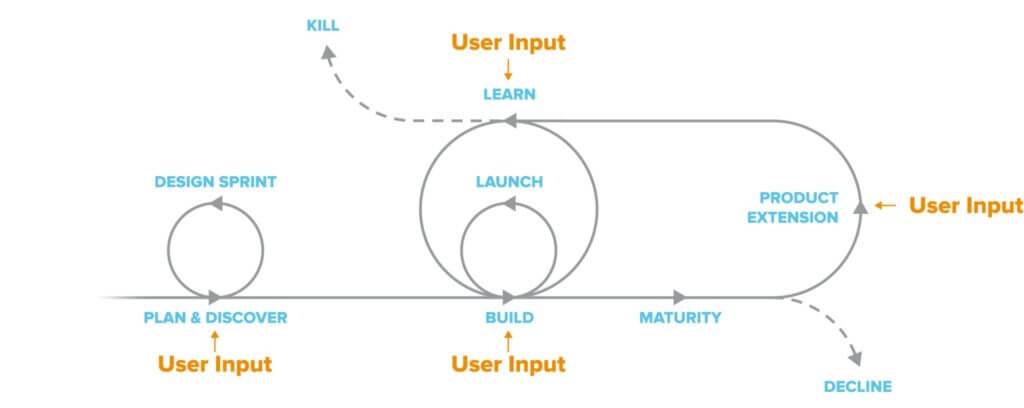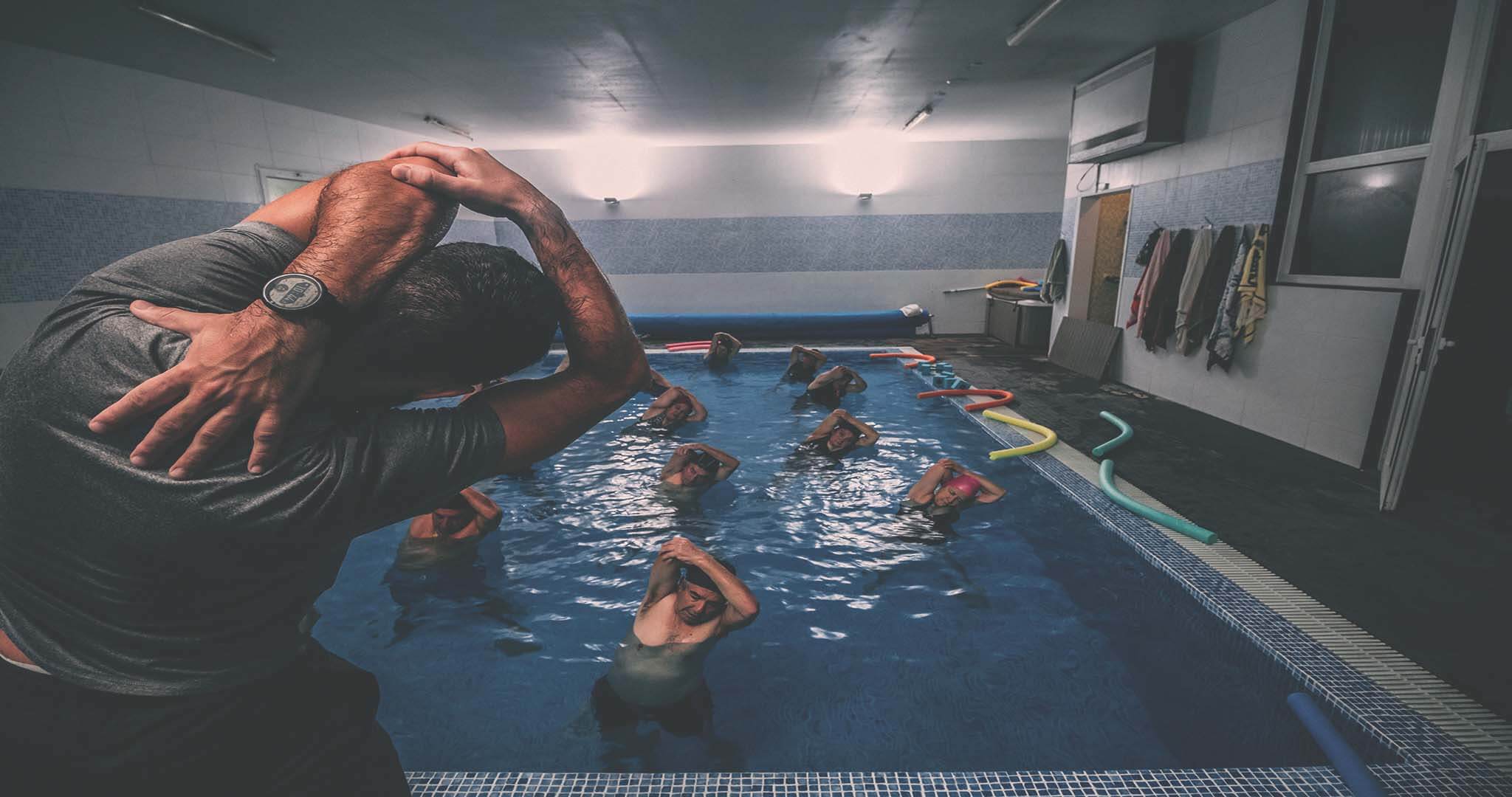With the health and fitness app market expected to swell to $44.7 billion by 2026, businesses worldwide are racing to carve out a piece of that market share. And if you’ve got an idea for a game-changing fitness app, you could be in the race.
But getting a fitness app to market can seem like a daunting task. Especially if you’re new to software development. There are plenty of questions you’ll need to be prepared to answer, and plenty you should be ready to ask on your way from project inception to launch. And with lots of competitors developing different types of fitness apps (activity tracking apps, workout apps, diet apps, training apps – you name it), you need to approach the whole thing the smart way.
The truth is that having ideas is just the beginning of a long journey. And just like with sports, starting without the right preparation can easily lead to having an injury that can effectively prevent you from finishing the race.
If you’re looking to get a jump on the competition and build a fitness app, this article will guide you through that process. We will go through the whole path of creating a digital product – from idea, through its validation, building MVP, to launching a fully-featured fitness app. You will see where it starts, how it goes, and what milestones you should meet on the way. Here we go!
Read also: How to choose a fitness app development company?
Fitness apps development, the lean approach
Your first instinct in design might be to take a shortcut and leap headfirst into creating a fitness app that’s ready for the market. Why not, right? Well, according to CB Insights, 42% of startups fail because they haven’t addressed a market need.

Your first goal is not to design a flashy new workout app ready for gyms, trainers, and at-home fitness buffs to pay for. Your first goal should be to validate your idea and build a proof of concept. There are many ways to accomplish this, but they all have one element in common: we need to engage the end-users. Right from the start, i.e. even before we decide what we want to build and how we want to do it. It is them, the end-users, who will tell us which of their problems we can solve.
Then, we develop a fitness app prototype that reflects the critical problems identified – and it’s essential to do it as quickly and cheaply as possible. It will allow us to validate our proposal to answer the users’ problems before building the actual tool.
So how to actually get started?
Step 1: Start by validating your idea for a fitness application
First and foremost, do not start making your app with an MVP. Before the team gets down to development work, you need to know if there is a problem-solution fit.
This step aims to make sure that you’re solving the fundamental problem users are having. And that your online gym or workout plan is worth making a reality.
Fitness apps, including both web and mobile apps, will continue to have many competitors fighting for the same market. With that stiff competition, it’s going to be more challenging to stand out. You’ll have to get away from the pack and tweak your plan by offering unique workouts, better activity tracking, or fitness recommendations than the rest. And you’ve got to be a problem solver.
So what’s the problem fitness app users are having? What would they gain if they could solve it? How do they solve it now? What would have to happen for them to change this current solution? Does your idea solve the user’s problem?
If you think it does, test your idea by reaching out to your early target group – trainers, customers, influencers, key partners, and workout app enthusiasts – and see if what you assumed was correct. You may, of course, have concerns that someone will steal your idea. And you’re right. Remember, however, that an idea without implementation is just an idea. As Steve Jobs famously said:
“Ideas are worth nothing unless executed. They are just a multiplier. Execution is worth millions.”
And you’ve already started the execution, gaining a considerable advantage. What’s more, you are doing it in the right way that reduces the risk of failure. We all have great business ideas. But only those who validate them have information about what their future users think about it. Thanks to the feedback loop with users, you can modify and adjust it accordingly.
Time matters
The earlier you begin contacting influencers, media, and early adopters, the better. If you already have a community of people who enjoy your training sessions offline or on some external platform, they are also a perfect group to pitch your fitness app, show some screenshots and ask for feedback.
Then go through fitness market reports, keyword and trends analyses, social media reports, and verify your market volume. See where you can find customers and what they’re engaged in.
It’s a lot of work, but all this information is crucial for you to create a fitness app that meets your customers’ expectations.
Step 2: Create a Proof of Concept
The initial validation of the idea has given you a running head start in developing the fitness app PoC. And you’re showing your target group that you have a problem-solution fit and that you can make a necessary change in the world of fitness.
Now it’s time to show your target group you can deliver – be it through whitepapers, mock-ups, visualizations, or other means. It could even be a landing page that pitches your fitness app idea and gauges user interest.
Continue getting feedback from your target group. Is this concept the answer they’re looking for? Does this fitness app provide the solution they’ve been after? Try to get as much information from potential users as possible. It will help you develop the app further and avoid building unnecessary features. That way, you make sure that the product is adjusted to the users’ needs while getting familiar with the app.
How to make a fitness app PoC?
At Neoteric, when we start working with those founders who have an idea for an app but are not sure how to start, we usually begin with a Design Sprint. It’s a five-day process dedicated to finding answers to the key questions if the idea for a product is worth testing on the market. We test it by creating a simple Proof of Concept and then validate with users to see if our idea answers their problem.
Before building a PoC, the team conducts research, starts with a business idea and vision, interviews potential clients, and defines key assumptions and goals. Each day in the Design Sprint has a specific scheme and tasks to perform. This structured process, where we go through the stages step by step, allows for effective operation and validation of the idea with potential clients. This process saves time and money and provides a solid foundation for further work.
After such a process, we are ready to move forward. We have a better understanding of users’ needs and value proposition, the description of a user journey, development recommendations, early Proof of Concept, and scope proposition for crucial functionalities of your fitness app.
Step 3: Develop and test a fitness app prototype
When building a prototype, you’re not worried about how sleek it might be. You shouldn’t focus on the advanced design, all the fantastic features it may have – unless they are the core of your unique value proposition – its onboarding process or even making any money.
You’re gunning for the “Aha” moment. It’s when the users realize that your fitness app is a game-changer for them, solve their problem better than any other app and that they want more. And you’ll be getting something in return from them for the long run – more feedback.
How to collect users’ feedback?
Feedback is the driving force behind design, development, and testing. It is something you will be repeating at every stage of your fitness app development process. Your early target group – those innovators, influencers, media, customers, experts in the fitness world – can provide you with all the information you need to succeed. The next step is just to pass this information along to the app developers.

With a working prototype, you can observe the app users’ behavior and see how they react to your fitness app. Having key metrics and goals set up, you can see if the app is solving their problems and how it’s better than what they’ve seen so far.
As you continually get feedback and develop and test the prototype based on that, your workout app gets better. Start introducing improvements. You test it again and again until you have a version of the app that makes the potential customer say: “Wow, I need that.”
Step 4: Develop a fitness app MVP and test it
What you’re working towards is an MVP (minimal viable product) that’s ready for the market.
You’ve got a sprawling log of feedback from users and testers. You’re using that to further design, develop and test your app. Here’s where you start incorporating your onboarding, cooler features, sleek design, and little extras that make your fitness app really stand out.
Take all that early feedback and spin it into a better version of the app. Continue to take direct feedback from your target group and beta testers. What bothered them the most? Is there anything that got under their skin? What did they like? What did they say they enjoyed? Take indirect feedback as well. Remember that declarative information often differs from behavioral data. What features did they use, and what features did they not use as much? What got a lot of attention? Was there anythis that caused difficulties to your users?
Not only are you improving the prototype and creating a better fitness app, but you’re also encouraging loyalty from the testing group and creating a pool of valuable early customers. Involving them in the process of product development, you are building a community around this app. As they can see how their feedback impacts its final shape, their loyalty will increase.
Now the key part: Repeat the design-develop – test loop until you’ve got a fitness app that’s ready to launch.
That’s right. It’s not the process that you do once and forget. The secret of most successful digital products is that they have the design-develop-test loop as their core.
You’re following the same cycle, taking sprints with the app development team to whittle the product down to the leanest, meanest, and most optimally functioning fitness app it can be.
Read also: How to build a fitness app when you know nothing about building apps
Fitness app development – where to start
So, you’re in the idea stage. Now, the theory is simple: you validate this idea, you build a prototype, gather feedback, build MVP, and develop it based on the feedback you receive and the metrics you collect. Easy-peasy. But how does it look in practice? Where to start?
If you’re reading this article, I assume you don’t have much experience building digital products, do you? You may not even have a technical team in your company. And that’s ok.
You can build it (which is quite risky, considering your little experience in this area), or you can choose a tech partner agency that will help you bring your product to life. Taking responsibility for the project, they will guide you through fitness app development while focusing on building the right features and testing them with users.
At this point, you’ll need to do your homework. Search out some software development agencies and check out their websites. Read their blog posts related to the health and fitness industry, and look into their case studies.
See if they’ve successfully developed a fitness app or a similar project for another client. When you’re ready to reach out to an agency to get to know more, you’ll likely need to provide your contact information and answer a few basic questions about your idea through a web contact form. Don’t worry; you won’t need to share any detail before signing an NDA.
to boost customer experience for the existing clients and reach over 20,000 new users
Get prepared for your first call
It all starts with a handshake. Though these days, it’ll probably be a virtual one through a remote video chat.
A representative from the fitness app development company, usually the business development manager, will reach out to you to set up the first call. This is a chance for you to vet the company and for the company to learn about your idea. The business development manager should ask you questions about your business plan, release strategy, and end goals and provide you with an independent view of the project.
Here’s an excellent opportunity for you to ask questions. When you’re developing a digital product, you’re not just working with a “gun-for-hire,” you’re establishing a long-term partnership. Make sure to ask questions that will help you decide if they’re the company to partner with.
- Have you ever worked on a fitness app before?
- What will our cooperation look like?
- How will we track the work’s progress?
- What is my role in the process?
If you’re up to snuff on the tech end, ask them what technologies they specialize in for web app development. After everyone’s questions are answered and you feel it’s a good fit, you can plan the next step.
Meet with fitness app developers
Now that the software development agency has gotten a grasp on your goal and you’ve properly vetted their capability, it’s time to move to the next step and dig deeper into your requirements and objectives. The standard way to do it is to go through a dedicated session. Its agenda should be adjusted to your needs and depend on the stage of your product’s development.
A session like this is an opportunity to meet the rest of the team, the app developers, and delivery managers and create an overall vision for your project. It’s like the blueprint for your fitness app development.
After the meeting, you should get a report that will lay the foundations for the development with a high-level backlog, recommended tech stack, and team composition. That’s also the time when you receive ballpark time & price estimates. They will give you an overview of how much it will cost and how long it may take to build your product.
Create a fitness app following Scrum
This is where the project kicks off. If you’ve never worked in the scrum before, this is where you’ll be introduced to this framework.
The sprints are exactly what they sound like: time-constrained periods where a task is completed or an addition to the app is made. This model allows you for quick iterations. You can frequently test delivered features with app users to get feedback and make decisions about project scope and priorities based on that feedback – and not on your assumptions.
Additionally, you avoid lots of work that you would otherwise spend on building features that the users don’t need. This way, you don’t end up having many features that are 80-90% ready. Even if you run out of budget, it may still be possible to reduce the scope during the project and limit the number of features.
In the (post-) COVID-19 time, full remote era, communication is key. If you’re working entirely remotely with a development team, it’s essential to make sure communication is successful. You don’t want to feel like you’re out of the loop or have lost control.
Your team should have daily meetings where they can discuss successes and blockers, solve problems, focus on issues, and keep everyone on the same page for the process. And all team members should be available at all times via messaging systems like Slack, Microsoft Teams, or Google Hangouts.
Using the iterative approach and the design-develop-test loop, the team designs develops, and tests features based on user feedback. What’s important is that every sprint is devoted to a specific feature. Whether you’re creating a prototype or a product ready for the market, you repeat this process until you’ve got the top version of your fitness app.
Further reading: What is Scrum? How it works and why we love it
Launch your own fitness app
Strap in. All that hard work’s paid off, and you’ve created a fitness app that’s ready for the market. But as any business owner knows, this is only the beginning.
Once the app is launched, you are able to gather feedback and analytics data on a larger scale. See how users interact with your product, what features they use, how they use them, what takes most of their time. You will use that data to improve your fitness app – fix the bugs, add new features, or modify the existing ones.
Once you have traction, you can think about hiring a small development team. You can also continue working with the same tech partner that helped you build the product in the initial phase.
As you collect data about your users’ behavior, you can also consider bringing your fitness app to the next level and introducing AI-powered modules. Using Artificial Intelligence, you will be able to:
- make personalized workout plans to support people in achieving their fitness goals,
- use image recognition to help your users do the exercises the right way and imitate the experience of a session with a fitness trainer,
- make tracking progress easy for the users,
- or even predict the risk of their churn.
Check also: artificial intelligence development services
Key takeaways
Getting a fitness app to market successfully, on time, and within budget is no easy feat. And it’s important to know your role and responsibilities as a product owner and what is expected of the software team in order to get it done. It can be overwhelming to leap into the unknown but don’t worry. With a bit of market research and preparation, you can be well on your way to the races in developing a successful fitness app.
If this is your first go-around with fitness app development, we hope this provided a little clarity on what to expect during the process. If you enjoyed this article, please read more about fitness app development on Neoteric’s blog, or reach out if you have any more questions or want to discuss your project.
Discover best UX practices used in the top custom e-fitness applications






